Renewed Life Creations
Artifact Library
Take a look at all our various wood samples.
BarnArt includes a unique line of
Felled and milled by specific processing techniques introduced by an Amish family and a practice still in play today and relatively unchanged since the late 1800s. Sourced from early American settlements near the Tennessee-Alabama state line, these durable, fragrant woods are used all around the world to make furniture, build ships, and manufacture goods.
While the woods are distinct and native to the region, the timber from the forest is logged and milled in a manner that has essentially stayed the same for about 150 years.
Hardworking Amish settlers manually used teeth-like crosscut saws and transported them to mills on horse and buggy where a 5’ circular saw powered by a single diesel engine polished off the process. Through religious custom and tireless devotion, the Amish laid the groundwork for how these Tennessee Valley Exotic woods are widely distributed and displayed today. In fact, some of the earliest woodworking of the Amish from the 18th and 19th century could be worth a sum of hundreds of thousands of dollars.
Early American factories mass-produced items that were subpar in terms of design quality and aesthetic appeal. The Amish became revered for their handcrafted beauty, definitive designs, and expert craftsmanship. Reluctant to use electricity due to religious beliefs, the Amish slowly introduced gas and diesel compressors to fulfill needs to refrigerate milk, run appliances, and operate power tools. To this day, Amish artisans under precise production
standards and commitment to sustainability, durability, and cost savings on shipping, storage, and high-powered machinery.
The Tennessee Valley region is comprised of rugged, rolling hills, thick hardwood forests, and vast valleys. It’s home to early Civil War battlegrounds, moonshine hollows, and early pioneers like Davy Crockett. Its host of habitats include numerous exotic hardwoods including Ambrosia Maple, Walnut, Red Gum (locally known as Satin Walnut), Rainbow Poplar (mineral wood), and Mulberry. With scarce supply and the commercial industry commonly sourcing its wood elsewhere, the local timber and milling trade is a big boost to the local economy.
Tennessee Valley hardwoods are unique and versatile for the home with features like flooring, trim and molding for windows, doors, and baseboards, cedar decking, wood columns, and live edge slabs ideal for tables, counters, chairs, and stools. RLC repurposes a variety of woods for industrial and residential production. Every piece is custom-built with a keen eye on the environment achieved through top quality wood, minimal waste, and efficient production policies.
BarnArt – Tennessee Valley
Exotic (TVE) Hardwood Samples
Ranging from 1” – 3” thick and up to 12 – 14’ in Length
Sassafras
Sassafras is a stunning and durable hardwood frequently used around the world to build ships and make furniture. Its distinctive aroma lends to its “Cinnamon Wood” nickname. It’s also been referred to as “Root Beer Wood” due to its rich brown color. In the Tennessee Valley, sassafras is called “Buggy Wood” since it’s used in Amish horse and buggy construction. The Louisiana bayou staple filé powder gets its spicy herb-like taste from the dried and ground leaves of sassafras, thus labeling it “Creole Wood.” Sassafras is also used in candy and beverages, again a flavor additive to root beer. The root bark of the hardwood can help make medicines and offer multiple benefits for the body and mind
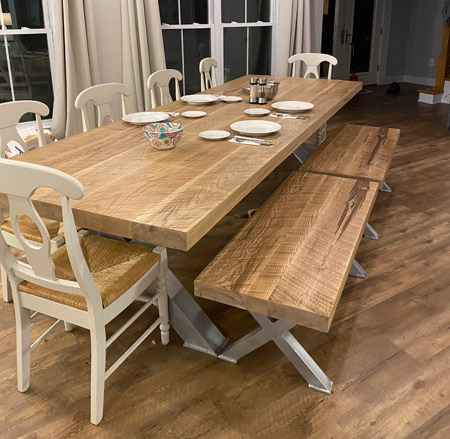
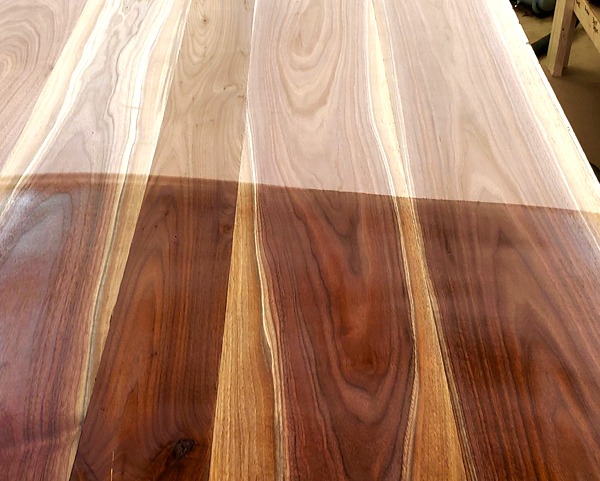
Ranging from 1” – 3” thick and up to 12 – 14’ in Length
Walnut
Along with Mahogany and Cherry, Walnut set the standard for early American furniture. Black Walnut, also known as American Walnut, derives from a luscious, nourished shaded tree that stands tall and stretches wide. Walnut lumber has a refined look with a rich finish for multi-purpose use. At the mill, walnut remains unsteamed, preserving the beautiful browns, golds, and purples with striking appeal. The walnuts we eat offer a multitude of nutritional benefits and when the wood is repurposed by artisans and craftsmen, the end result is recognized, reclaimed and remarkable.
Ranging from 1” – 3” thick and up to 12 – 14’ in Length
Ambrosia Maple
Ambrosia maple is considered a decorative feature which gives the wood additional charm and character. Maple sapwood ranges in color from nearly white, to an off-white cream color, occasionally with a reddish or golden hue. It’s durable yet moderately easy to work with both hands and machinery. The maple stems from the Ambrosia Beetle and is suitable for home amenities like flooring, furniture, panels, and veneers. Its unusual grain powder makes for attractive appeal on table tops and decorative furniture accents.
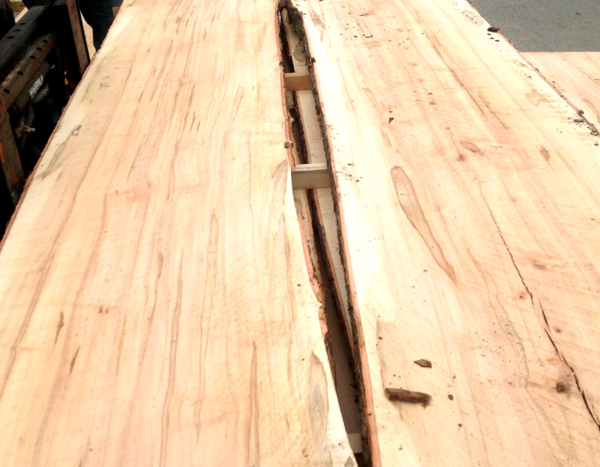
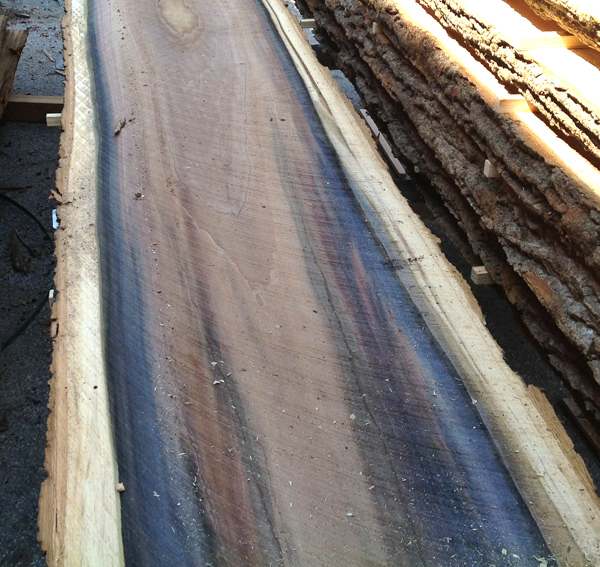
Ranging from 1” – 3” thick and up to 12 – 14’ in Length
Rainbow (Mineral Stained) Poplar
Rainbow poplar is wood that appears mineral stained with striking streaks of green, purple, black, red, etc. The hardwood can be turned into live edge slabs, essentially with its natural edges left untouched making the poplar perfect for tables, bar tops, desks, benches, headboards, shelves, and even cutting boards.
Ranging from 1” – 3” thick and up to 12 – 14’ in Length
Red Gum
Ambrosia maple is considered a decorative feature which gives the wood additional charm and character. Maple sapwood ranges in color from nearly white, to an off-white cream color, occasionally with a reddish or golden hue. It’s durable yet moderately easy to work with both hands and machinery. The maple stems from the Ambrosia Beetle and is suitable for home amenities like flooring, furniture, panels, and veneers. Its unusual grain powder makes for attractive appeal on table tops and decorative furniture accents.


Ranging from 1” – 3” thick and up to 12 – 14’ in Length
Mulberry
A relatively soft hardwood, mulberry can be found in benches, chairs, and drop-leaf dining room tables. Mulberry trees can grow ten feet in a single season, have a robust root system, and offer fruit clusters used in breads, pies, jams, and wine. When aged, mulberry becomes a deep brown and makes for fascinating frame and panel work.
Ranging from 1” – 3” thick and up to 12 – 14’ in Length
Red Elm
Red elm hardwood stems from trees that stand up to 80 feet tall and spans light to reddish brown hues with coarse uneven texture. Its interlocked grain and high grade structure make it resistant to splitting, less likely to decay, and ideal for long-lasting applications like hardwood flooring, furniture, boxes, baskets, and even hockey sticks. Whether red elm is used for woodworking, furniture making, or DIY projects around the home, its unmistakable color and texture convey a professional, polished product and enhance the ambiance of any room.
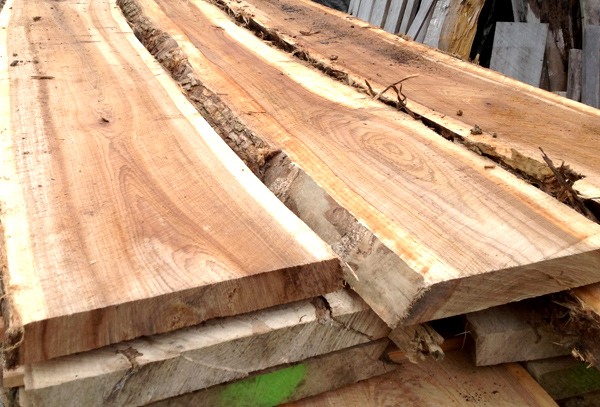
Have access to unique wood or local reclaimed material whose legacy and history you’d like to preserve in design and turn into heirloom furnishings?
We'll Pay A Premium Price! Contact Us!Contact us today to begin your
one-of-a-kind piece.
Let’s begin your journey by connecting you with our wood and their stories.
Contact Us
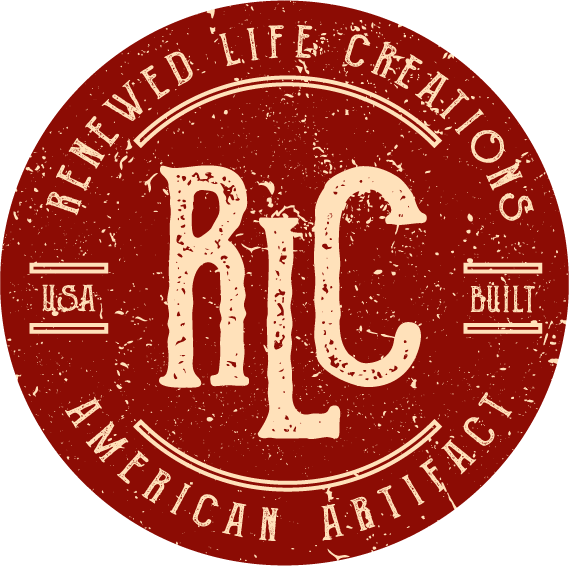



 Based Out Of Port Richey, Florida
Based Out Of Port Richey, Florida